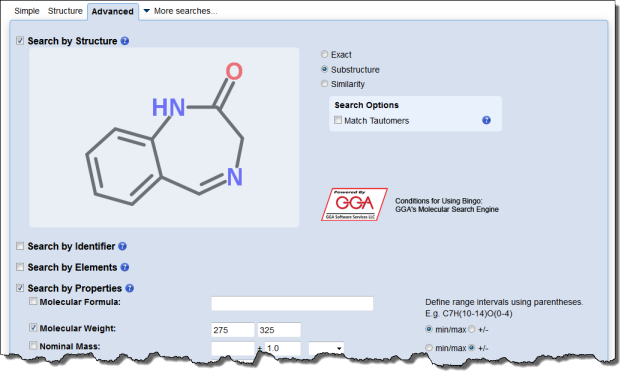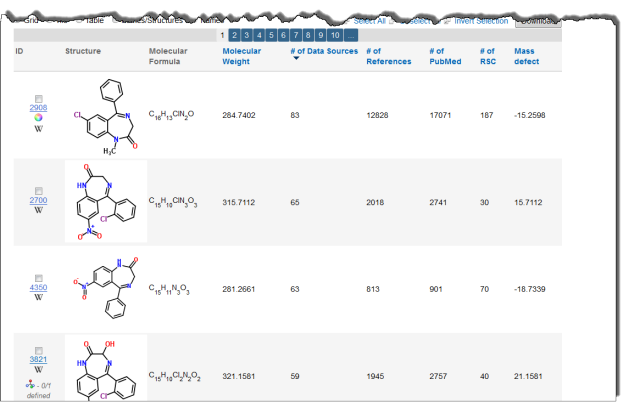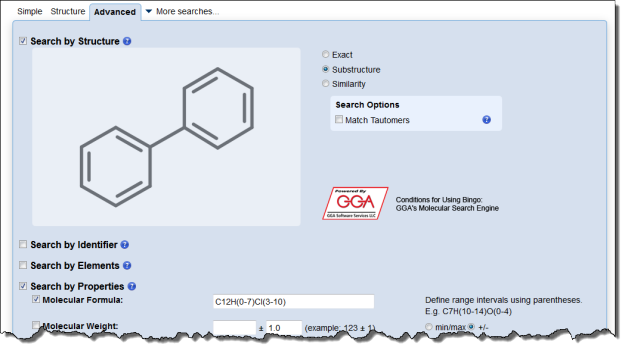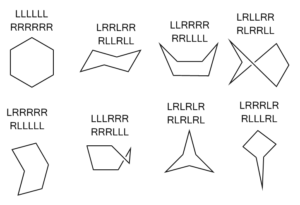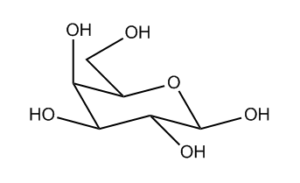We recently published an update to the ChemSpider website which, in addition to fixing a number of bugs, has added some useful new features. Three of these features are highlighted in this post – one which you might have noticed already, and two which you may not have discovered yet.
Auto-Complete
We have reinstated the auto-complete feature on the ChemSpider homepage. Now, when you begin typing in the search box, ChemSpider makes suggestions based on what you have typed. This makes it easier than ever to find what you are looking for – even if you aren’t quite sure how to spell it.
Combined Structure/Property Searches
People frequently ask if there is a way to search substructure and other properties like molecular weight or molecular formula at the same time. This update now makes it possible to perform this kind of combined search from our improved Advanced Search page.
E.g. If you are interested in finding compounds which are structurally similar to Valium, you can enter a benzodiazepinone substructure and restrict it to compounds with a molecular weight of 275-325.
This search then returns Valium along with other similar drugs like clonazepam, nitrazepam and lorazepam.
There are many other search options that can be combined with a substructure/similarity search so look at the Advanced Search page and have a play.
Molecular Formula Range Searching
You can also search a range of molecular formulae at once. To specify the range for a given element, put the range in parentheses after the element. E.g. C7H(10-12)O(0-1) would return all compounds containing exactly 7 carbons and between 10 to 12 hydrogens and which may or may not contain an oxygen. This type of search can be performed from the Simple Search page, as part of an Advanced Search or from the ChemSpider homepage.
Best of all, this can be combined with any of the other search parameters on the Advanced Search page including the substructure search. For example, if you wanted to find polychlorinated biphenyls containing at least three Chlorines you could perform a substructure search for a biphenyl with a molecular formula of C12H(0-7)Cl(3-10).
In our next post, we will cover some new ways you can search by properties that are stored in our records such as melting point, density, etc.



